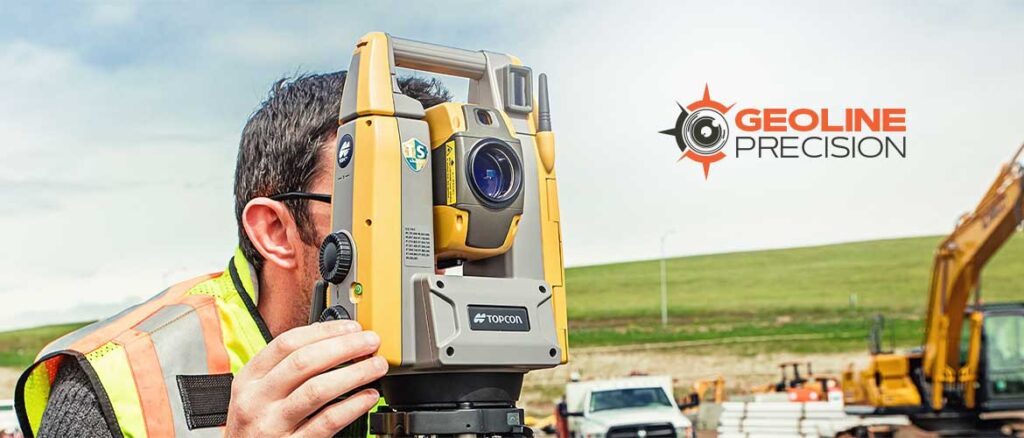
Total stations are essential tools for surveyors, engineers, and construction workers. These incredible devices combine the features of a theodolite and an electronic distance meter (EDM) to precisely measure angles, distances, and elevations. This makes them ideal for land surveying, construction, infrastructure development, and other applications.
One of the most significant benefits of total stations is their ability to accurately capture data. They can measure angles as little as 1/100th of a degree and distances within millimeters. This level of precision allows professionals in these fields to make critical decisions based on accurate information they can rely on. Total stations are an indispensable tool when it comes to ensuring that projects are completed correctly and safely. Beyond their accuracy, another key advantage of total stations is their versatility.
Setting Up a Total Station
Preparing for a total station setup can be exciting, but it requires careful planning and attention to detail. The area you choose must be free of obstructions, level, and have clear lines of sight in all directions. Before setting up the total station components, take the time to survey the area and eliminate any obstacles that may interfere with your measurements.
Assembling the components of your total station is no easy feat, but it’s a necessary part of preparing for accurate measurement. Ensure that each component fits together perfectly and is securely fastened in place. When assembling your total station components, always refer to the manufacturer’s instructions for guidance on how each piece should be connected.
Leveling your total station is essential for achieving precise measurements. Use a spirit level or an electronic leveling device to ensure the instrument and its tripod are perfectly leveled before performing any measurement tasks.
Usage of Total Station
Have you ever wondered how surveyors measure angles and distances with such precision?
Well, wonder no more! The answer lies in the total station – a powerful instrument used for measuring both vertical and horizontal angles and distances. But how do you make sense of all those buttons and displays?
Firstly, it’s important to understand the basic controls of a total station. There are four main components: the telescope or EDM (Electronic Distance Meter), which measures distance; the control panel, where you input commands; the battery pack, which powers the instrument; and finally, the tribrach, which stabilizes the whole apparatus on a tripod.
Once set up correctly on its tripod, it’s time to take measurements. By entering certain parameters into the control panel – such as prism constants or atmospheric correction factors – you can accurately determine horizontal and vertical angles from your position to a target point.

Recording data and managing power supply for extended usage can be daunting, but it becomes a breeze with the right tools and techniques. Whether monitoring environmental conditions or tracking energy consumption, accurate data collection is essential to make informed decisions. Fortunately, there are various solutions available that cater to your specific needs.
One of the most fundamental aspects of recording data accurately is choosing the right measurement device. A good quality instrument will provide you with trustworthy measurements that reflect reality. It’s also crucial to ensure that the device has adequate storage capacity so that you can save measurements without worrying about running out of space. This way, you can analyze trends over time and make well-informed decisions based on your findings. Depending on your needs, several options are available when managing power supply for extended usage.
Calibration of a Total Station
Calibration is vital in ensuring that any equipment functions correctly and accurately. In the world of surveying, calibration is particularly essential for total stations. A total station is an instrument used to measure angles and distances on land. It combines electronic distance measurement (EDM) with a theodolite, allowing surveyors to determine precise measurements of land features.
Several types of calibration must be performed on a total station throughout its lifetime. The first type is factory calibration, which occurs during manufacturing and ensures that the instrument meets certain standards. Regular calibration will also need to be done throughout the life cycle of the equipment, as wear and tear can impact its accuracy over time. Finally, field calibration should be conducted before each surveying task to ensure that all measurements are accurate.
Adjustment of Total Station
Adjustments are an essential aspect of surveying and measuring. To get accurate measurements, you must ensure your equipment is calibrated correctly. This calibration process is known as an adjustment in the surveying world. Without proper adjustments, the measurements taken by a total station can be inaccurate or even useless.
Various adjustments are necessary to achieve peak performance from a total station. The most common ones include leveling, optical plummet adjustment, horizontal collimation, and vertical collimation adjustment. Each of these adjustments plays a crucial role in ensuring precision measurements.
Adjusting your total station can seem daunting, but it’s relatively easy once you understand the basics. The first thing to do is to read through the manual carefully and familiarize yourself with all the components before proceeding with any adjustments.
